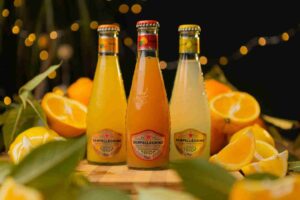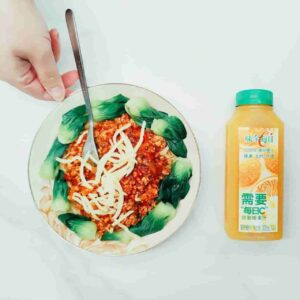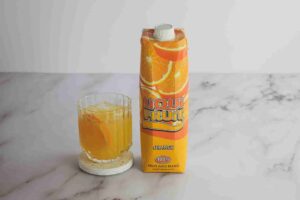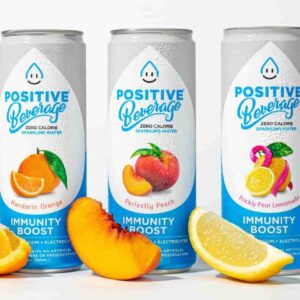When it comes to packaging orange juice, the choice of container can significantly impact both the product and the brand. With a variety of options available, including glass, plastic, paper, and metal, beverage and juice brand owners must understand the pros and cons of each. This article delves into the various orange juice bottle packaging types, highlighting their benefits and drawbacks, and helps you decide which packaging best suits your product.
Section 1 Glass Bottles
▶ Benefits of Glass Bottles
Glass bottles have been a popular choice for packaging beverages for centuries. Here are some reasons why:
○ Preservation of Flavor: Glass is a non-reactive material, which means it does not interact with the juice inside. This ensures that the orange juice retains its original flavor without any alterations. Green juice bottles, in particular, offer additional protection against light, which can degrade the quality of the juice.
○ Aesthetics and Perception: Glass bottles give a premium feel to the product. They are often associated with high-quality and luxury products, making them an excellent choice for brands positioning themselves in the premium market segment.
○ Environmental Impact: Glass is 100% recyclable and can be reused indefinitely without losing its quality. This makes it an environmentally friendly option, appealing to eco-conscious consumers and brands.
▶ Drawbacks of Glass Bottles
Despite their benefits, glass bottles have some disadvantages:
○ Weight and Fragility: Glass juice bottles are heavier and more fragile than other packaging options. This can lead to higher transportation costs and a higher risk of breakage during shipping.
○ Cost: Glass bottles are generally more expensive to produce and transport compared to plastic and paper options.

Section 2 Plastic Bottles
▶ Benefits of Plastic Bottles
Plastic bottles are one of the most commonly used packaging materials for beverages, including orange juice. Here are some of their advantages:
○ Lightweight and Durable: Plastic bottles are lightweight, which reduces transportation costs. They are also durable and less likely to break compared to glass bottles.
○ Cost-Effective: Plastic bottles are cheaper to produce than glass or metal bottles, making them a cost-effective choice for many brands.
○ Versatility: Plastic bottles come in various shapes and sizes, including small juice bottles and mini orange juice bottles, providing flexibility in product offerings.
▶ Drawbacks of Plastic Bottles
However, plastic bottles have their downsides:
○ Environmental Concerns: Plastic is not as environmentally friendly as glass. Although many plastic bottles are recyclable, they often end up in landfills and oceans, contributing to pollution.
○ Potential Health Risks: Certain plastics can leach chemicals into the juice, especially when exposed to heat or sunlight, potentially posing health risks to consumers.

Section 3 Paper Cartons
▶ Benefits of Paper Cartons
Paper cartons are increasingly popular for juice packaging due to their environmental benefits and convenience.
○ Environmental Impact: Paper cartons are made from renewable resources and are recyclable, making them an eco-friendly packaging option. They also have a lower carbon footprint compared to plastic and metal.
○ Lightweight and Convenient: Paper cartons are lightweight and easy to store. They are also less likely to break compared to glass, making them a practical choice for both manufacturers and consumers.
▶ Drawbacks of Paper Cartons
Despite their benefits, paper cartons have some limitations:
○ Preservation of Flavor: Paper cartons can sometimes impart a slight taste to the juice, which can alter its original flavor. Additionally, they offer less protection against light and air compared to glass bottles.
○ Limited Reusability: While paper cartons are recyclable, they are not reusable, which can be a drawback for consumers who prefer reusable packaging.

Section 4 Metal Cans
▶ Benefits of Metal Cans
Metal cans, particularly aluminum, are another option for packaging orange juice. Here are some of their advantages:
○ Durability and Protection: Metal cans are highly durable and provide excellent protection against light, air, and contaminants, ensuring the juice stays fresh for longer periods.
○ Recyclability: Aluminum cans are highly recyclable and can be recycled multiple times without losing quality. This makes them an environmentally friendly option.
▶ Drawbacks of Metal Cans
However, metal cans have some disadvantages:
○ Cost: Metal cans can be more expensive to produce compared to plastic and paper options.
○ Perception: Metal cans are often associated with carbonated beverages like soda and beer, which may not align with the branding of a premium orange juice product.

Section 5 Comparison of Packaging Options
▶ Environmental Impact
|
Packaging Type |
Recyclability |
Reusability |
Carbon Footprint |
|
Glass |
High |
High |
Moderate |
|
Plastic |
Moderate |
Low |
High |
|
Paper |
High |
Low |
Low |
|
Metal |
High |
Moderate |
Moderate |
▶ Cost Analysis
|
Packaging Type |
Production Cost |
Transportation Cost |
|
Glass |
High |
High |
|
Plastic |
Low |
Low |
|
Paper |
Moderate |
Low |
|
Metal |
High |
Moderate |
▶ Consumer Perception
|
Packaging Type |
Perceived Quality |
Brand Image |
|
Glass |
High |
Premium |
|
Plastic |
Moderate |
Economical |
|
Paper |
Moderate |
Eco-friendly |
|
Metal |
Moderate |
Beverage-specific |
Choosing the right packaging for your orange juice depends on various factors including cost, environmental impact, durability, and brand positioning. Glass bottles, with their premium feel and excellent flavor preservation, are ideal for high-end brands. Plastic bottles offer cost-effectiveness and durability but pose environmental and health concerns. Paper cartons are lightweight and eco-friendly, making them suitable for brands targeting eco-conscious consumers. Metal cans provide excellent protection and recyclability but come with higher production costs.
As a brand owner, it’s essential to weigh these factors carefully to select the packaging that best aligns with your brand values and meets your customers’ expectations. Whether you opt for green juice bottles, juice bottles with lids, small juice bottles, or bulk juice bottles, your choice will significantly impact your product’s success in the market. Contact us for more ideas about your juice packaging!










